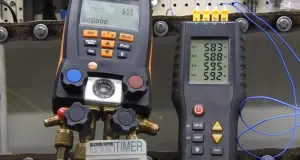Cooking Vacuum Sealed Food
How To Cook Vacuum Sealed Food? Vacuum sealing your food for storage has one of the great benefits of being able to take it directly from the fridge or freezer to cook in the bag. There are many ways to prepare vacuum-sealed food. Let’s explore in this article, “How to cook vacuum-sealed food.”
Vacuum Sealed Food – How To Simmer
The technique of simmering in a water bath at low temperatures is called sous vide. Despite being around for centuries, it has only become popular in the last decade or so. You should prepare your food, season it, vacuum-seal it, and put it in a water bath for the right amount of time and temperature. You can cook it for up to 4 hours at low temperatures (below 180 °F).
Vacuum Sealed Food – How To Boil
Boiling food in vacuum-sealed bags is a great way to reheat it. When it comes to cooking a meal quickly, this is an easy option if you have leftovers or have done meal preparation. The clean-up is also quick and simple. You can cook it at high temperatures (above 180°F) for up to 20 minutes.
Vacuum Sealed Food – How To Microwave
A vacuum-sealed bag will deliver the same results like those used to seal frozen vegetables in store-bought bags. Take your frozen vegetables out of the freezer and thawing is not needed. Cut a small corner of each for venting, then microwave for approximately 4-7 minutes, depending on the vegetable type. You can cook with a punctured bag for up to 10 minutes. You will have steamed vegetables in no time.
Before you vacuum seal your vegetables, season them with salt, pepper, butter, or whatever ingredients you prefer and toss them in the freezer. After steaming the vegetables, they will have a perfect flavor.
Is It Possible To Vacuum Package Cooked Food
Vacuum packaging cooked foods are one of the most frequently asked questions from home and restaurant users. While the answer to that question is yes, there is more to it.
A vacuum sealer is a popular item for use in the kitchen, whether it is for commercial, professional, or residential use. Along with meal prep, many people use their vacuum sealer to seal already cooked food. Let it cool to room temperature before using a vacuum sealer.
You should not seal hot food, as this can lead to the growth of bacteria. The perfect way to store cooked food and extend its shelf life is by vacuum sealing it once it has been cooled to room temperature.
When vacuum sealing food, always follow basic food safety guidelines. Before starting a vacuum seal, it is best to let the food cool to room temperature. Vacuum sealing can keep food fresh for up to 5X longer than traditional methods of storing food.
Is It Possible For Mold To Grow In Vacuum Sealed Bags
The vacuum seal prevents all air from entering, thus preventing the food from being properly ventilated. It can result in mold growing in the bags especially if you live in an area with a lot of humidity.
Is It Possible To Microwave Vacuum Sealed Bags
Cooking raw food in vacuum-sealed bags is not a good idea, but it is fine to reheat cooked foods in them. In general, freezing pre-cooked meals in vacuum-sealed bags and re-heating them in the microwave does not pose a problem.
How Long Do Vacuum Sealed Foods Last
A vacuum-sealed package of frozen food lasts on average two to three years while any other package of frozen food lasts between six and twelve months. Vacuum-sealed food can last in the refrigerator for up to two weeks, compared to conventionally stored food, which has a shelf life of just a few days.
What Bags Work With Vacuum Sealers
Any bag will not work for vacuum sealing. Normal bags leak oxygen and cannot hold a vacuum. Make sure the vacuum bag specifies that it is a barrier bag in the specifications. Material thickness and the type of bag will determine how much barrier there is.
Should Vacuum Sealed Food Be Refrigerated
Vacuum-packed, low-acid foods cannot be stored at room temperature and require refrigeration between 38 and 40 degrees. It is safe to store frozen food in vacuum packs. Thawing frozen food in the refrigerator slows microorganism growth.
Other Uses Of Vacuum Bags
It is convenient to have a vacuum bag when traveling or shifting from one house to another. When swapping out seasonal clothing in your wardrobe, they are extremely handy. They also keep items free of dust and moisture and create more space in your room.
Conclusion
The design of vacuum seal bags is specifically for boiling food. It provides not only a safe way of cooking, but it is also very effective. When preparing food, it is always best to use a vacuum sealer bag and a large pot that can hold a lot of water.




